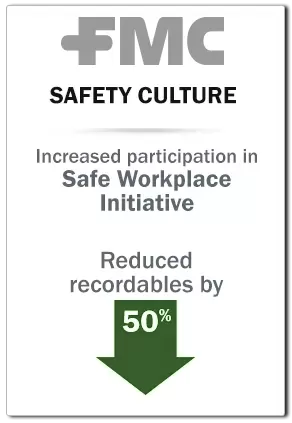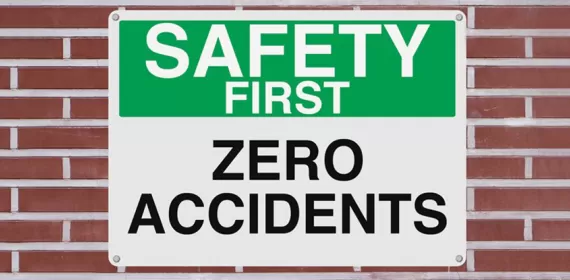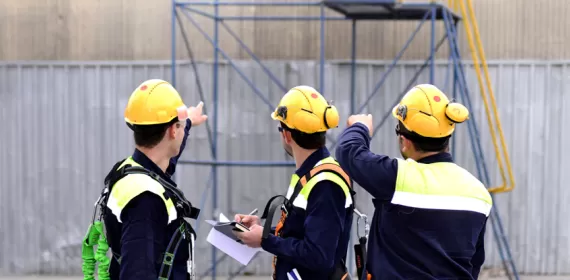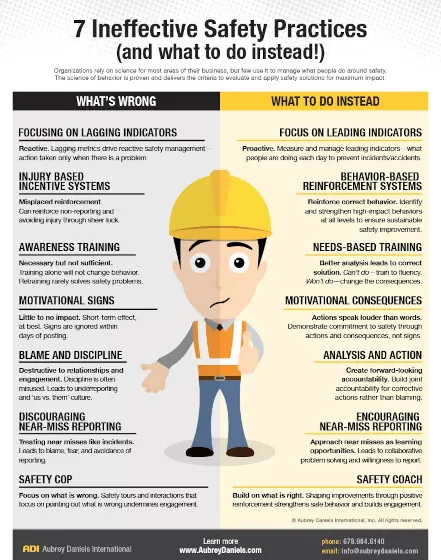




Safety Challenges Facing the Mining Industry
Whether working in a surface or underground mine, workers must remain vigilant and avoid or control ever-present and situational hazards to keep themselves and their coworkers safe. Methane gas explosions, poisonous fumes, structural collapses (e.g., roof, wall, dam), and flyrocks annually lead to serious injuries and fatalities (SIFs) while over-exposure to dust, vibration, or noise contribute to disease and disabilities. Despite the high-hazard environment, complacency by miners and all levels of leadership can develop over time. Most industrial disasters can be attributed to the failure of a major system and human error.
While increasingly robust safety management systems and advances in mining engineering and safe practices have had a positive impact on mine safety, the consistent implementation of those systems and active engagement in those safe practices relies on an organization’s ability to eliminate procedural variance and build and sustain safety-related habits. Whether it’s recognizing and responding to hazards, conducting comprehensive risk assessments despite fatigue or schedule pressures, reporting near misses, or considering a decision’s impact on safety, an organization relies on its leaders, engineers, and crews to make the right decisions at the right time.
Start with an Engaged Workplace Safety Culture
Ensuring consistent safe practices requires a scientific understanding of behavior. Mining companies can mandate compliance with safety procedures, but the culture of the work environment and the short-term consequences for behavior will determine how consistently those procedures will be followed and whether employees will move beyond have-to, compliant behavior and demonstrate discretionary effort to ensure the safety of the work.
Discretionary effort at the front line relies on active and positive leadership engagement in safety. Leaders who talk about safety as much as they do production; who take a positive, proactive approach to managing safety; and who consider the impact of their decisions, words, and actions on safety, send a clear message to other leaders and the workforce that safety is of upmost importance. ADI’s safety leadership training will prepare your leaders for that challenge. Our behavioral safety technology and cascaded coaching process will build safety engagement and positive accountability from the top of your organization to your frontline employees, from safety in decision making to life-saving behaviors.
ADI has been providing behavioral expertise to organizations for more than 40 years. We can help build your workplace safety culture, improve your safety performance, foster safety engagement, and create positive, proactive management practices for your long-term success. Regardless of the challenges you face, if you are responsible for the safety of others and need to improve engagement in safety in your organization, we can help. Contact us today to learn how to apply a scientific approach to safety leadership, systems, practices, and your workplace safety culture.
Services Tailored to the Mining Industry
Here are just a few ways ADI supports you in applying sound behavioral principles to motivate and sustain safety performance.
Human Performance and Mining
Advances in mine engineering and technology have had a positive impact on mine safety but some organizations fail to address the human performance component of mine safety. Watch as Judy Agnew discusses the importance of an effective behavior management system and how a positive, proactive approach to developing a safety culture will help to build and sustain a culture of safe habits.

Solutions for Industry Challenges
Need help with common safety challenges in mining?
Here are just a few ADI can help you tackle:
Many organizations publicly set a commendable goal of “zero injuries.” While setting a goal of zero is always done with the best of intentions, without the positive and proactive management of prevention activities, the goal often leads to undesirable activities that ultimately decrease the chances of achieving that goal. Read on to learn more about setting a goal of zero injuries...
It doesn’t matter if you are at the front line or in management, engagement in safety is tough to come by and requires good leadership skills. Frontline supervisors can improve their skills and better engage their direct reports. Eliminating blame is just one way. Read on for the remaining four...
Safety Management Systems (SMS) are all about the behavior required from all levels of the organization. While a good SMS outlines what needs to be done and provides tools for doing it, most organizations do not include the learnings from behavioral science to ensure that those things get done and get done well. Read on for tips on how to make your SMS more effective...
Bottom line: if you want stronger engagement, you need to develop sound relationships. There are many best practices you can apply for building effective relationships that go beyond just being nice. Following through on commitments in one. Read on for
Understanding human behavior from a scientific perspective is critical in safety, especially when looking for the root cause of at-risk behavior. In this video blog, Judy Agnew and Aubrey Daniels explain how a scientific approach to human performance can produce a safer workplace and why behavioral consequences ultimately determine whether or not behavior will be repeated. Watch this short video to learn more...
Most industrial disasters are a perfect storm of major system failures and human error. Often people at lower levels of the organization have had concerns, but those concerns often don’t travel up the chain of command. Leaders will never know what is really going on until they are able to establish trusting relationships demonstrated through credible action. Read on to learn how leaders can achieve big gains in safety through small steps...

MINING COMPANIES MUST USE SCIENCE TO MANAGE WHAT PEOPLE DO AROUND SAFETY.
Avoid common errors by following these science-based practices:
- Focus on leading indicators.
- Use behavior-based reinforcement systems.
- Provide needs-based training.
- Emphasize motivational consequences.
- Create forward-looking accountability.
- Encourage near-miss reporting.
- Be a safety coach.











